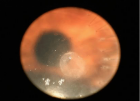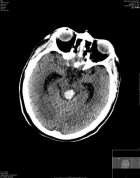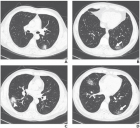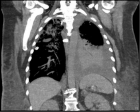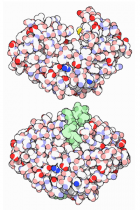About National and Kapodistrian University of Athens
National and Kapodistrian University of Athens
Articles by National and Kapodistrian University of Athens
The effect of a European-based exercise program upon the health-related physical fitness of individuals with intellectual disabilities: The alive and kicking perspective
Published on: 24th December, 2019
OCLC Number/Unique Identifier: 8505524065
The present study examined the effect of the European-Based ‘Alive and Kicking’ exercise program on the health-related physical fitness of individuals with (Experimental Group: EG) and without (Control Group: CG) (Intellectual Disability: ID). The Self-Determination Theory: SDT, guided both the 6-month preparatory phase and the 9-month exercise program, which was conducted in five separate European countries (Cyprus, France, Greece, Portugal and Spain). The total sample (n = 200, 54% males and 46% females) comprised of 168 individuals with ID (age: 26.54 years, + 7.78) and 32 individuals without ID (age: 25.81 years, + 8.73) respectively. The statistical analyses revealed that the ID group’s performance (EG) improved significantly in a range of health-related physical fitness variables (sit & reach, pushups, sit ups, long jump, ½ mile walk/ run). In turn, the participants from the CG improved mainly in muscular endurance (sit ups and pushups). The results are discussed in accordance with SDT and the dairies kept from the staff involved (coaches and psychologists) during the 9–month intervention. The present findings, although subjective to certain limitations, are encouraging, given the large-scale, real-world nature of the research design, and provide evidence supporting the integration of theoretical strategies enhancing motivation into traditional coaching programs for individuals with ID.
The short and mid-term effects of Mulligan concept in patients with chronic mechanical neck pain
Published on: 16th April, 2018
OCLC Number/Unique Identifier: 7547467716
Background: Mechanical chronic neck pain is very common musculoskeletal dysfunction among people, manifesting one or more pain-induced movements and disability impairments. Clinical guidelines suggest passive cervical mobilization and thoracic manipulation as manual therapy interventions. Mulligan concept has positive effect in patients with lumbar and thoracic spine mechanical chronic pain. Study objective was to investigate possible clinical effects of Mulligan techniques in patients with cervical pain according to pain and disability status.
Methods: forty participants diagnosed with mechanical chronic cervical pain, randomly assigned into experimental and control group. NAG, SNAG and self-SNAG joint mobilization in a nine-sessions protocol implemented to the study group, while SHAM-Mulligan techniques applied to control group. Self-reported questionnaires Numeric Pain Rating scale (NPRT) and Neck Disability Index (NDI) were used for the measurement of pain and disability levels respectively. Possible Interactions among Factors (TIME X GROUP) and simple effects in three-time measurements of pre, post and one-month follow-up concerning NDI and NPRS variables, were detected with Mixed-ANOVA test.
Results: Baseline scores of pain and disability resulted in no differences between groups. A significant Group and Time factors interaction founded and simple main effects analysis showed that Mulligan concept-group had significant improvement in post-intervention NPRT and NDI scores (p<.001), compared to baseline scores. Follow-up also differed compared to post-treatment score (p<.001). SHAM-Mulligan control group had no significant differences in dependent variables at any level of TIME factor (p>.001). Significant differences were found between groups according to second and third measurement phase (p<.001).
Conclusion: Our findings suggest that Mulligan concept techniques improve symptoms of pain and disability in chronic mechanical neck pain patients in short and mid-term effect level.
Summary: Mobilization techniques of SNAGs, NAGS and self-SNAGs reduces pain and improve function in patients with mechanical neck pain. Taken into consideration the safety and simplicity of application, future studies are encourage to examine the underline mechanism of action.
Severe aorto-iliac occlusive disease: Options beyond standard aorto-bifemoral bypass
Published on: 27th December, 2018
OCLC Number/Unique Identifier: 7964753024
According to recent guidelines, endovascular angioplasty is the standard treatment for TASC A and B primary aorto-iliac occlusive (AIOD) disease, and the first-line approach for TASC C lesions [1,2]. Extended TASC D occlusive disease is usually treated by open surgery yielding excellent patency rates at a cost of a higher mortality (2%-4%) and a severe morbidity (up to 10%) [3]. However, several studies have reported promising results after endovascular treatment of extensive AIOD and full reconstruction of the aortic bifurcation [4,5]. In a recent meta-analysis, Jongkind et al., concluded that endovascular treatment of extensive AIOD can be performed successfully by experienced interventionists in selected patients [6]. Although primary patency rates seem to be lower than those reported for surgical revascularization, reinterventions can often be performed percutaneously yielding a secondary patency comparable to surgical repair.
A Genetic study in assisted reproduction and the risk of congenital anomalies
Published on: 12th October, 2021
OCLC Number/Unique Identifier: 9305465911
In vitro fertilization is one of the most common and effective procedure for thousands of couples worldwide who want to have a child and are unable to do so for various reasons. Diverse studies show that couples who conceive naturally after one year of trying had newborns with an increased risk of prematurity and low birth weight, compared with couples who conceived before completing one year of trying. Children from assisted reproduction (AR), have a 30% increased risk of prematurity and low birth weight, compared with children from infertile fathers. Regarding the conflicting results the present study aimed to record the frequency of genetic, congenital anomalies in children and adolescents who had examined in the last decade to the Clinical Genetics Clinic of the National and Kapodistrian University of Athens whose mothers had undergone assisted reproduction. The research process was conducted at the "Aghia Sofia" Children's Hospital based in Athens. However, the cases that were studied came from all over Greece. Initially, the researcher recorded the cases that came to the clinic of Clinical Genetics and whose conception occurred after technical assisted reproduction. After telephone communication and the consent of the parents, a live appointment was scheduled. In this meeting-interview all the provisions of the investigation and the protocol were asked and some elements of the medical history of the cases were confirmed. The total sample included 230 children and adolescents. The resulting data were recorded on a printed form/questionnaire. Then, they were registered electronically in the program SPSS 25.0 (Statistical Package for Social Sciences) with a specific unit code for each case/patient, followed by the processing and statistical analysis of the data as well as the recording of the results. The gender of the participants was male for 118 participants (51.3%) and 112 females (48.7%). Mean and standard deviation (SD) of maternal, paternal (at the time of delivery) age was equal to 36.38 (5.94) and 39.94 (6.58) respectively. The observed abdormalities were 35.53% psychomotor retardation, 23.68% facial abnormalities, 23.68% spinal cord abnormalities, 21.05% morphological abnormalities, 20.61% short stature, 19.74% developmental disorders, 19.30% heart disease, 16.67% neurological diseases, 14.47% genetic syndromes, 11.40% genital abnormalities, 8.33% limb abnormalities, 7.46% dermatological abnormalities, 6.14% eye abnormalities, 6.14% hypothyroidism, 5.70% endocrine disorders, 5.26%otolaryngology abnormalities, 2.63% disease of kidney, intestine, 2.19% vascular malformations. Regarding the karyotype chromosome analysis by G-banding technique, from the 230 children in: 24 (10.43%) a pathological result was found, in 158 children (68.70%) it was found normal (46, XX or 46, XY by case) without other findings, while in 48 children (20.87%) the test was not performed for various reasons. Regarding the results of molecular analysis (DNA) from the 230 children, in 50 (21.74%) a pathological finding was found, in 56 children (24.35%) no abnormalities were found and in 124 children (53.91%) no molecular analysis was performed for various reasons. In conclusion, the sample of this descriptive study is characterized as uniform in terms of the method of assisted reproduction since 96.24% had followed the classic IVF. Full-term pregnancy was associated with the appearance of malignancy and head morphological abnormalities (64.6%), normal pregnancy was associated with genetic syndromes (18.2%) and facial abnormalities (11.1%). It is recommended the screening oocyte and sperm donors in order to help protect the safety and health of donors, recipients, and future offspring. The present study confirms the association of the presence of congenital anomalies after in vitro fertilization (IVF). However, the absolute risk of developing severe dysplasias after an IVF procedure is limited.

If you are already a member of our network and need to keep track of any developments regarding a question you have already submitted, click "take me to my Query."






